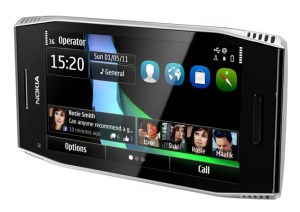
Market analysis firm IDC pas published its Worldwide Quarterly Mobile Phone Tracker data for the first quarter of 2011, and the results show consumers are jumping on the smartphone bandwagon like never before. According to IDC, worldwide sales of smartphones reached 99.6 million units during the first quarter of the year, a 79.7 percent increase over the 55.4 million units shipped in the same quarter a year ago. The reasons? Consumer demand, of course, fueled by both the availability of highly-anticipated new devices along with lower price points for older or basic smartphones that let users get their foot in the door.
“The rise of Android as a prominent mobile operating system has allowed several suppliers to gain share quickly,” adds IDC senior research analyst Kevin Restivo, in a statement. “Also, the relatively nascent state of smartphone adoption globally means there is ample room for several suppliers to comfortably co-exist, at least for the short term.”
IDC still pegs Nokia as the largest maker smartphones on the planet—this despite largely ignoring the North American market and still struggling to come up with a response to Apple’s industry-changing iPhone. According to IDC, Nokia still accounted for 24.3 percent of the global smartphone market in the first quarter of 2011—and while that figure represents a 12.6 increase over the company’s shipments a year ago, it’s well behind the overall growth rate of the smartphone market. IDC ranked Apple as the number-two smartphone vendor with an 18.7 percent share during the first quarter of the year; Canada’s Research in Motion came in third with a 14 percent share, Samsung managed fourth place with a 10.8 percent share, and HTC came in fifth with an 8.9 percent share.
Although Apple posted very strong growth for the quarter—moving within 6 million units of Nokia—the strongest growth was actually seen by Samsung, which saw a 350 percent year-on-year increase in smartphone shipments, riding the success of its high-end Galaxy S smartphone line along with Galaxy Ace and Galaxy Mini devices at lower price points. And, although it’s not available in the North American market, smartphones running Samsung’s Bada operating system continue to do good business.
Editors' Recommendations
- Look who just replaced Samsung as king of the global smartphone market
- I compared two of the year’s best phones in an extreme camera test
- The 15 most important smartphones that changed the world forever
- Here’s why you should buy certified renewed or refurbished smartphones
- This Verizon smartphone deal gives you up to $1,000 for your broken phone

